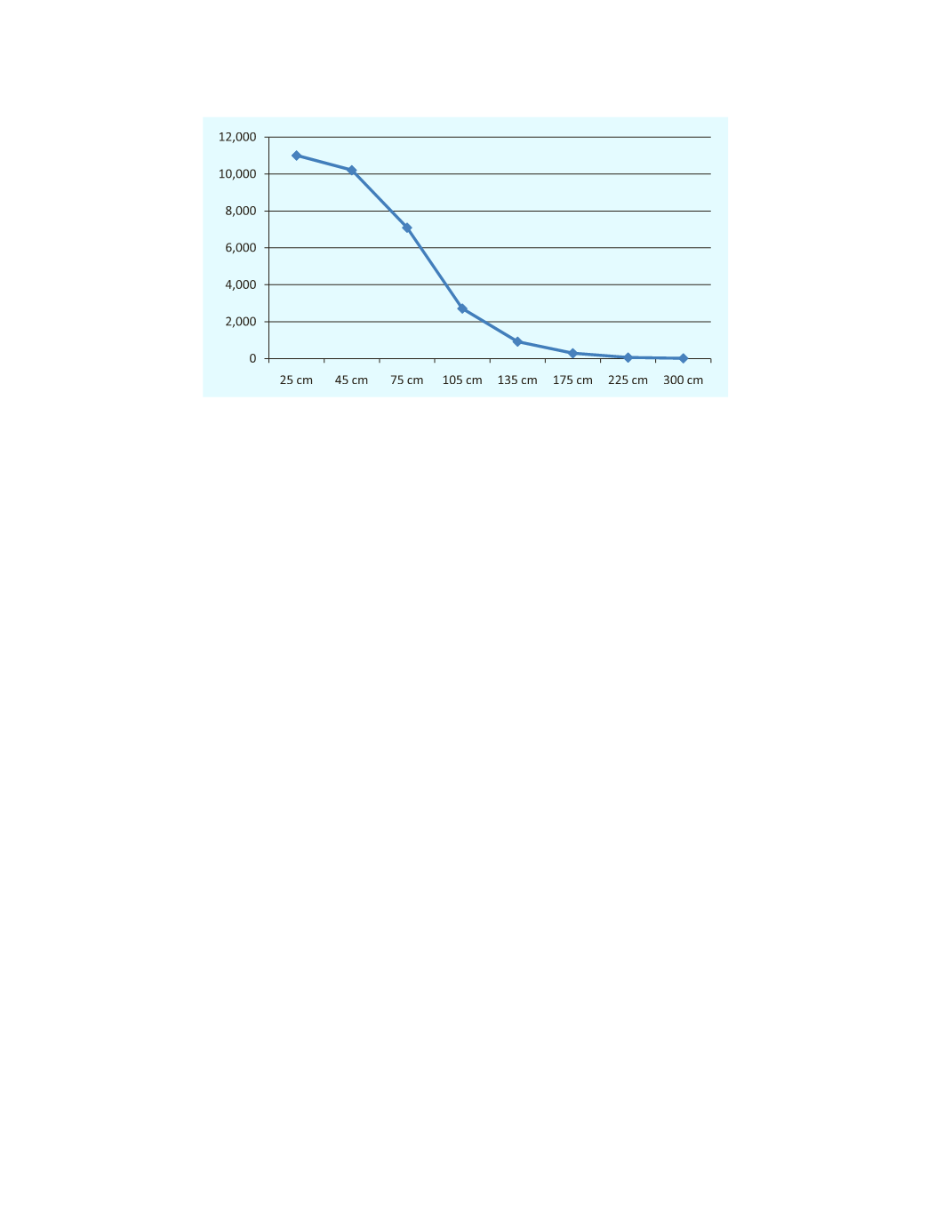
28
Scale of plantation was high during 1971-80
and also in 1991-2000 due to availability of
blank spaces, but it slowed down during the
last decade due to saturation of plantation
and non-availability of open spaces. This is
the main reason that number of trees in the
lower girth classes or in low age is lower than
the normal distribution. On the other hand,
due to development of tree canopies of old
plantations, a large area has come under dense
tree cover. Low rate of plantation during the last
decade due to non-availability of adequate land
and also due to developmental activities have
some impact on the number of young trees but
not much on tree cover. Distribution of trees in
different age classes reveals that the number
of trees is high in middle and old age classes.
Natural age of several species like
Kashid, Israeli
bavad,
Pincasia,
Prosopis, Asopalav
etc. is low
and they start dying naturally after three decades
of their ages in dry soil in the semi-arid region.
Also, numbers of long living trees like
khati-
amli
, rayan, mango, vad, pipad etc. are very low.
About 1.27 lakh (14.6%) trees have GBH above
90 cm and they are old. There are about 4,180
big trees having GBH above 2.0 m. Even trees
with lower girth classes of several species like
kashid
,
Israeli bavad
,
Pincasia
etc. have reached
to their maturity age and have started dying.
Distribution of trees in different girth classes in 2011
GBH classes in centimeter
Carbon store and sequestration:
Carbon store
in the trees in Gandhinagar has been estimated
about 1.79 lakh tones and annual sequestration
rate may be about 68,00 Carbon tones per year.
Conclusion:
The main reasons for loss of trees
in Gandhinagar are: (i) the annual loss of
trees due to natural factors like age, wind and
other such factors may be about 2-3 % of total
population of trees, (ii) allocation of the land for
infrastructure development to meet needs of
the Capital City, and (iii) increasing number of
houses to accommodate growing population in
the city. Thus, annual loss of trees may be in a
range of 5.0 % to 7.5 % of total tree population
in future. Thus, roughly about 7.5 % of total
population of trees should be raised annually.
If we assume 80 % survival percent after five
years of plantation in Gandhinagar under high
cost model of plantation, the scale of plantation
should be
at least 80,000 tall
seedlings per
year to maintain the present level of greenery
in Gandhinagar. Also, the number of Khati amli,
Deshi mango and Rayan may be improved as
these long living trees are native to the area.
There are 39 villages in GUDA (Gandhinagar
Urban Development Authority). These villages
also have adequate tree cover but can be
improved marginally.
Fig. 1


